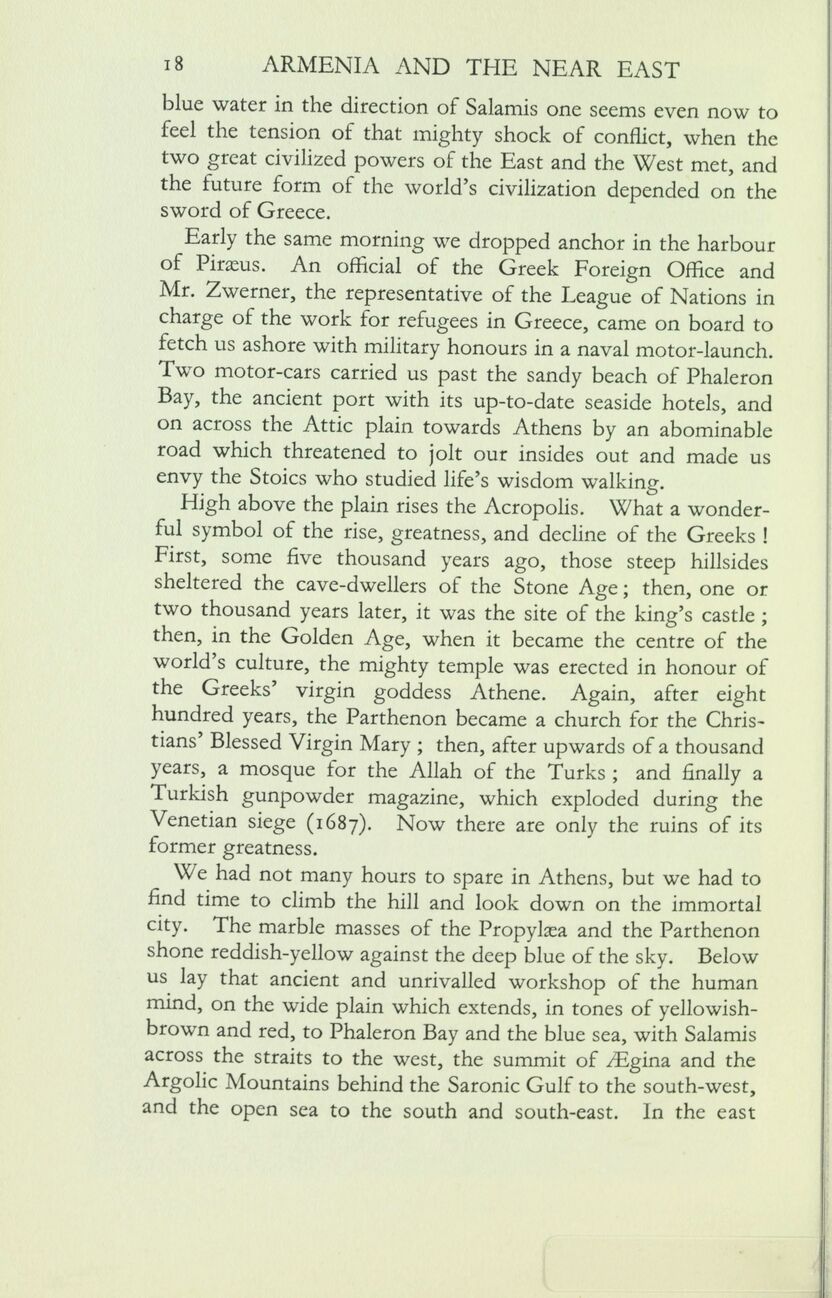
Full resolution (JPEG) - On this page / på denna sida - I. To Constantinople

<< prev. page << föreg. sida << >> nästa sida >> next page >>
Below is the raw OCR text
from the above scanned image.
Do you see an error? Proofread the page now!
Här nedan syns maskintolkade texten från faksimilbilden ovan.
Ser du något fel? Korrekturläs sidan nu!
This page has been proofread at least once.
(diff)
(history)
Denna sida har korrekturlästs minst en gång.
(skillnad)
(historik)
blue water in the direction of Salamis one seems even now to
feel the tension of that mighty shock of conflict, when the
two great civilized powers of the East and the West met, and
the future form of the world’s civilization depended on the
sword of Greece.
Early the same morning we dropped anchor in the harbour
of Piræus. An official of the Greek Foreign Office and
Mr. Zwerner, the representative of the League of Nations in
charge of the work for refugees in Greece, came on board to
fetch us ashore with military honours in a naval motor-launch.
Two motor-cars carried us past the sandy beach of Phaleron
Bay, the ancient port with its up-to-date seaside hotels, and
on across the Attic plain towards Athens by an abominable
road which threatened to jolt our insides out and made us
envy the Stoics who studied life’s wisdom walking.
High above the plain rises the Acropolis. What a wonderful
symbol of the rise, greatness, and decline of the Greeks!
First, some five thousand years ago, those steep hillsides
sheltered the cave-dwellers of the Stone Age; then, one or
two thousand years later, it was the site of the king’s castle;
then, in the Golden Age, when it became the centre of the
world’s culture, the mighty temple was erected in honour of
the Greeks’ virgin goddess Athene. Again, after eight
hundred years, the Parthenon became a church for the Christians’
Blessed Virgin Mary; then, after upwards of a thousand
years, a mosque for the Allah of the Turks; and finally a
Turkish gunpowder magazine, which exploded during the
Venetian siege (1687). Now there are only the ruins of its
former greatness.
We had not many hours to spare in Athens, but we had to
find time to climb the hill and look down on the immortal
city. The marble masses of the Propylæa and the Parthenon
shone reddish-yellow against the deep blue of the sky. Below
us lay that ancient and unrivalled workshop of the human
mind, on the wide plain which extends, in tones of yellowish-brown
and red, to Phaleron Bay and the blue sea, with Salamis
across the straits to the west, the summit of Ægina and the
Argolic Mountains behind the Saronic Gulf to the south-west,
and the open sea to the south and south-east. In the east
<< prev. page << föreg. sida << >> nästa sida >> next page >>